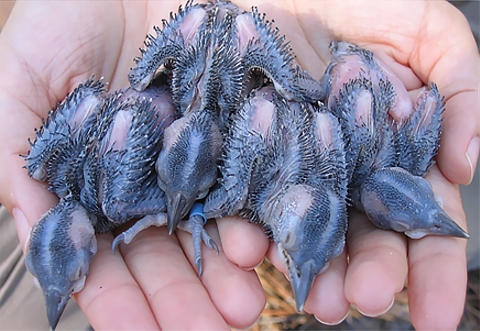About Us
Our vision is to collaboratively foster vibrant, healthy, abundant and self-sustaining resources within the Piedmont, Sandhills, and Coastal Plain by promoting reasonable science-driven conservation.
Our greatest asset is proximity to the natural resources of interest and partnerships with others in the local conservation community. Our staff bring to the table expertise in these areas:
- Aquatic ecology
- Aquatic and terrestrial habitat restoration
- Bat monitoring and identification
- Dam removal and other forms of fish passage fish passage
Fish passage is the ability of fish or other aquatic species to move freely throughout their life to find food, reproduce, and complete their natural migration cycles. Millions of barriers to fish passage across the country are fragmenting habitat and leading to species declines. The U.S. Fish and Wildlife Service's National Fish Passage Program is working to reconnect watersheds to benefit both wildlife and people.
Learn more about fish passage - Federal natural resource laws
- Fish and wildlife toxicology
- Imperiled species recovery and management
- Information technology
- Plant identification and morphology
- Policies and programs
- Public outreach
- Red-cockaded woodpecker and longleaf pine habitat management
- Red wolf management
Habitats of the Piedmont, Sandhills, and Coastal Plain regions of Central and Eastern North Carolina include:
- Forests
- Estuarine communities
- Longleaf pine and grassland forest
- Lake communities
- Ocean shoreline (322 miles), including dunes and maritime forests
- Pocosin wetlands- peatland and streamhead
- Streams and rivers
- Wet pine savannas
We also assist the Fish and Wildlife Refuge System personnel, who manage 400,000 acres of habitat that sustain rare plants and animals that live and depend on 11 wildlife refuges located in eastern North Carolina.
Our Mission
Congress has entrusted the Service to conserve and protect the following federal trust resources for the public's use and benefit:
- Endangered and threatened plants and animals
- Migratory birds
- Migratory fish
- National Wildlife Refuges lands and waters
Our role in conserving these resources is mandated under authorities of the Endangered Species Act, Migratory Bird Treaty Act, Fish and Wildlife Coordination Act, and other laws, regulations, and Executive Orders.
Our History
Key Dates
- The Raleigh Field Office was established on October 31,1955, to investigate impacts associated with federal development projects in portions of Maryland, Virginia, North Carolina, South Carolina, and Georgia. Currently, we cover North Carolina's easternmost 57 counties with staff in Raleigh, Southern Pines and Manteo.
- 1966, Congress passed the Endangered Species Preservation Act, providing a means for listing native animal species as endangered and giving them limited protection.
- 1969, Congress amended the Act to provide additional protection to species in danger of "worldwide extinction" by prohibiting their importation and subsequent sale in the United States.
- 1973, Congress passed the Endangered Species Act (ESA).
Congress enacted significant amendments in 1978, 1982, 1988, and 2019 while keeping the overall framework of the ESA essentially unchanged.




